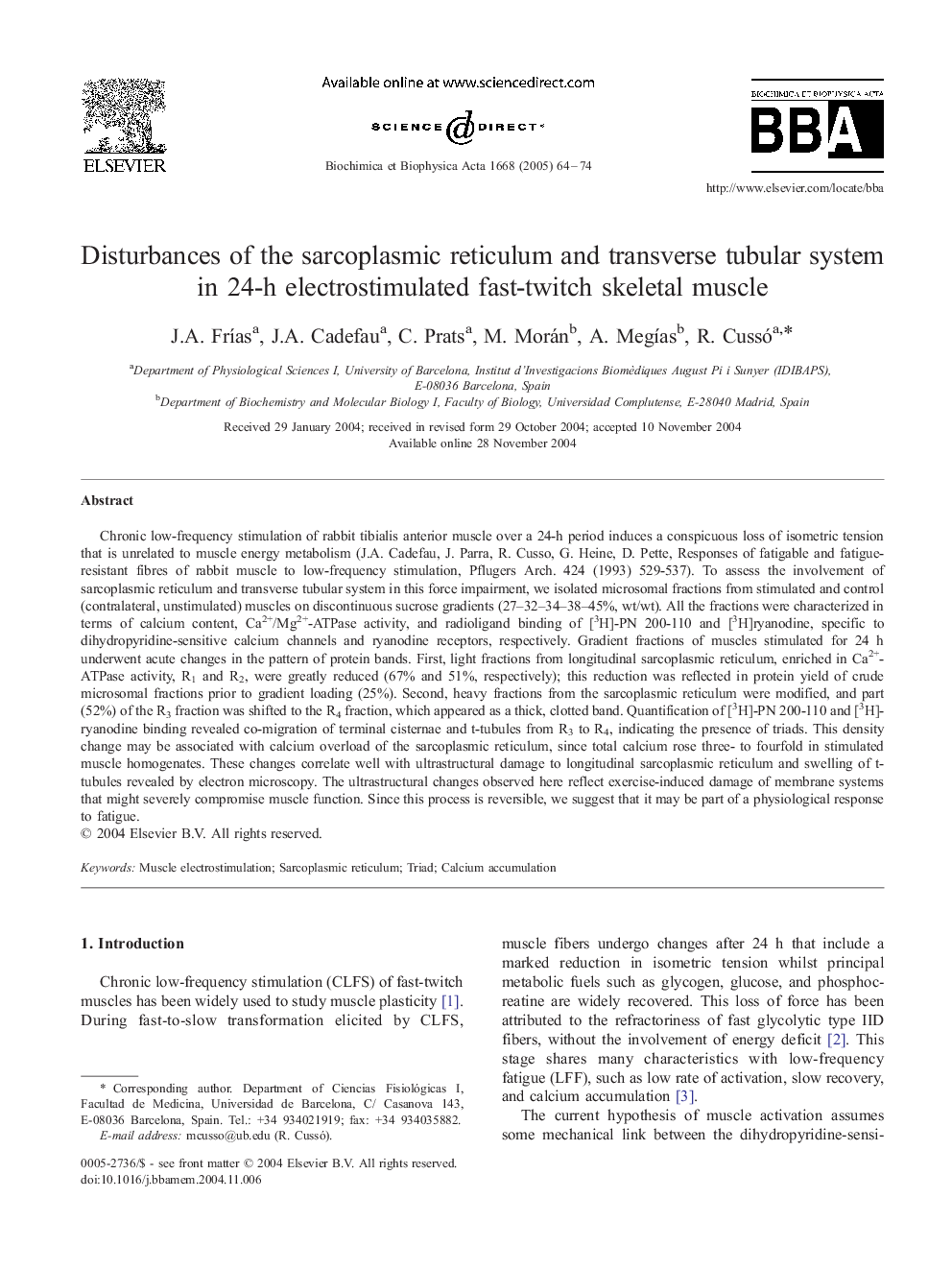| Article ID | Journal | Published Year | Pages | File Type |
|---|---|---|---|---|
| 10798238 | Biochimica et Biophysica Acta (BBA) - Biomembranes | 2005 | 11 Pages |
Abstract
Chronic low-frequency stimulation of rabbit tibialis anterior muscle over a 24-h period induces a conspicuous loss of isometric tension that is unrelated to muscle energy metabolism (J.A. Cadefau, J. Parra, R. Cusso, G. Heine, D. Pette, Responses of fatigable and fatigue-resistant fibres of rabbit muscle to low-frequency stimulation, Pflugers Arch. 424 (1993) 529-537). To assess the involvement of sarcoplasmic reticulum and transverse tubular system in this force impairment, we isolated microsomal fractions from stimulated and control (contralateral, unstimulated) muscles on discontinuous sucrose gradients (27-32-34-38-45%, wt/wt). All the fractions were characterized in terms of calcium content, Ca2+/Mg2+-ATPase activity, and radioligand binding of [3H]-PN 200-110 and [3H]ryanodine, specific to dihydropyridine-sensitive calcium channels and ryanodine receptors, respectively. Gradient fractions of muscles stimulated for 24 h underwent acute changes in the pattern of protein bands. First, light fractions from longitudinal sarcoplasmic reticulum, enriched in Ca2+-ATPase activity, R1 and R2, were greatly reduced (67% and 51%, respectively); this reduction was reflected in protein yield of crude microsomal fractions prior to gradient loading (25%). Second, heavy fractions from the sarcoplasmic reticulum were modified, and part (52%) of the R3 fraction was shifted to the R4 fraction, which appeared as a thick, clotted band. Quantification of [3H]-PN 200-110 and [3H]-ryanodine binding revealed co-migration of terminal cisternae and t-tubules from R3 to R4, indicating the presence of triads. This density change may be associated with calcium overload of the sarcoplasmic reticulum, since total calcium rose three- to fourfold in stimulated muscle homogenates. These changes correlate well with ultrastructural damage to longitudinal sarcoplasmic reticulum and swelling of t-tubules revealed by electron microscopy. The ultrastructural changes observed here reflect exercise-induced damage of membrane systems that might severely compromise muscle function. Since this process is reversible, we suggest that it may be part of a physiological response to fatigue.
Related Topics
Life Sciences
Biochemistry, Genetics and Molecular Biology
Biochemistry
Authors
J.A. FrÃas, J.A. Cadefau, C. Prats, M. Morán, A. MegÃas, R. Cussó,
